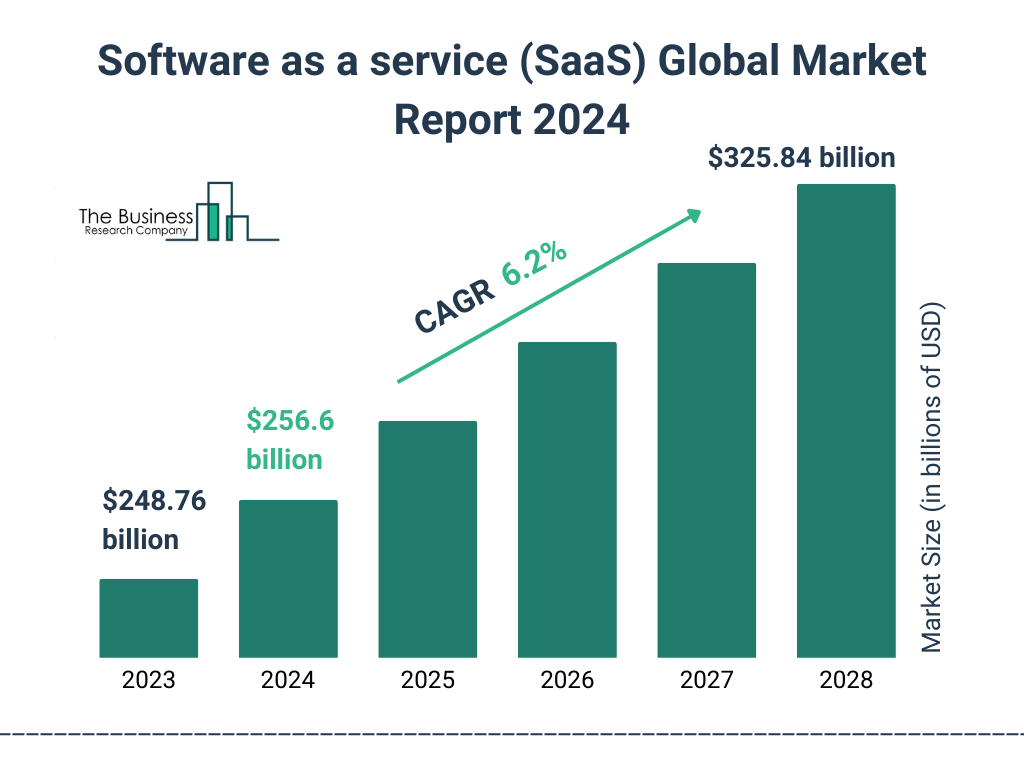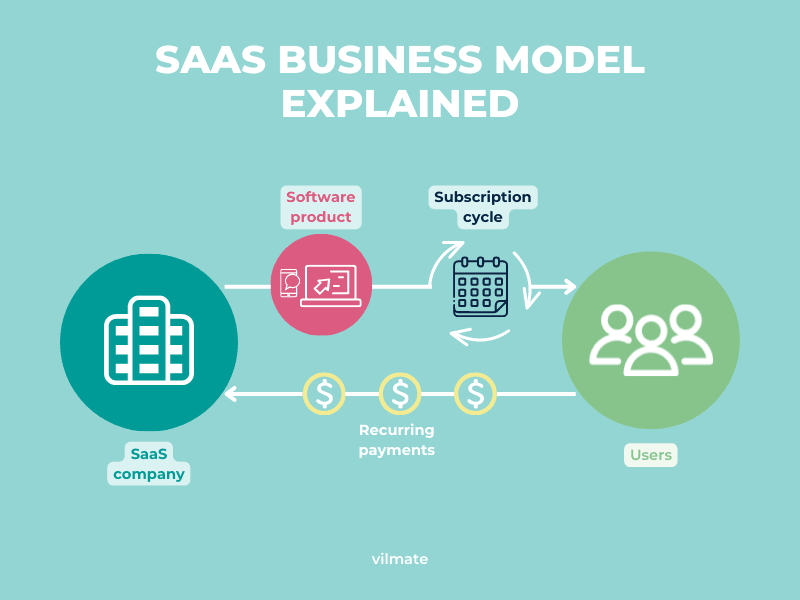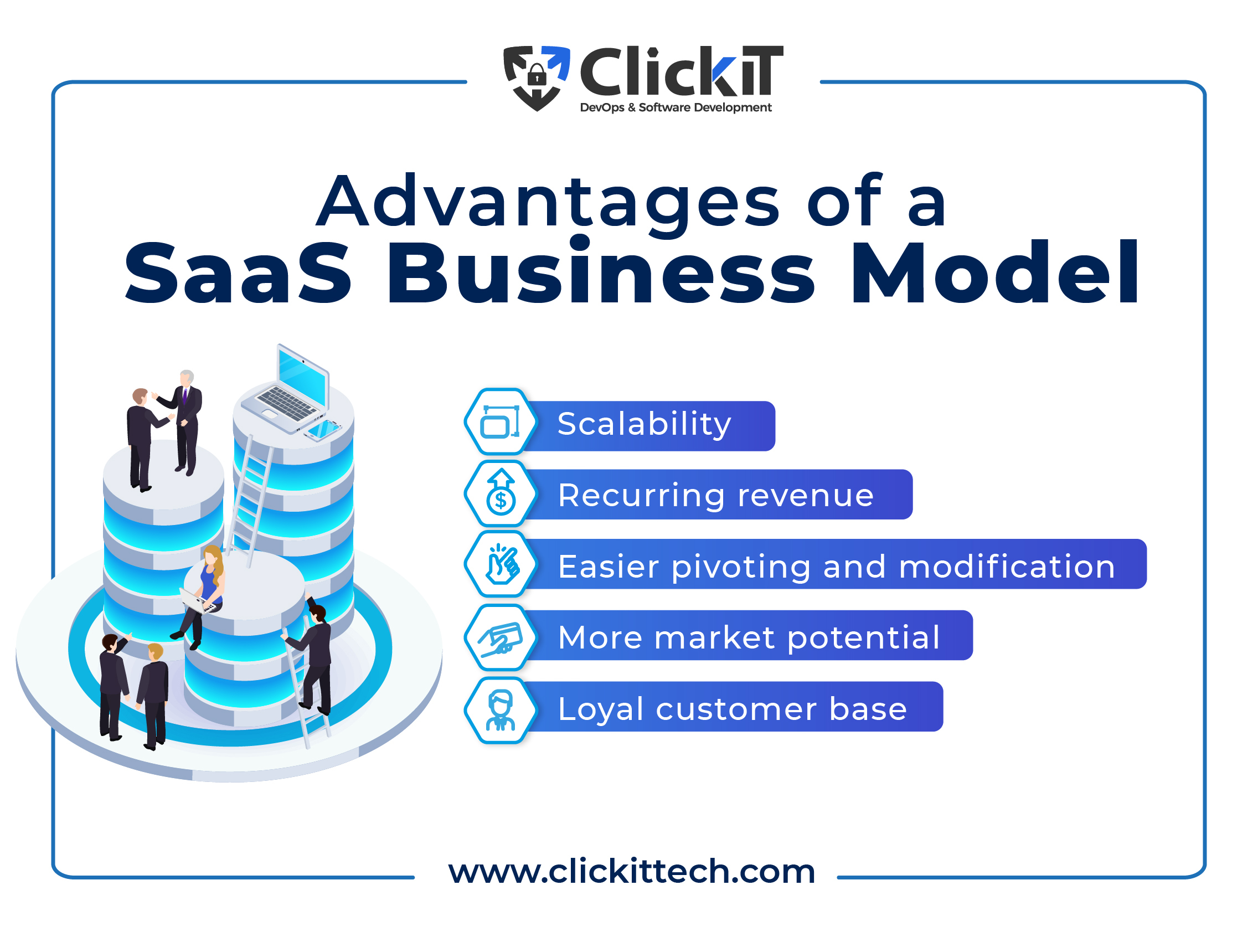SaaS Models Exposed: Features, Benefits, And Opportunities
Table of Contents

- jaro education
- 21, November 2024
- 1:00 pm
Imagine this: you wake up to find your team collaborating seamlessly on a global project, all powered by cloud-hosted tools that require no hardware installations or complex setups. Welcome to the world of the SaaS model (Software as a Service), where scalability, efficiency, and innovation intersect to redefine modern business operations.
From small startups to global enterprises, the SaaS Business Model is transforming how businesses operate, scale, and thrive. According to a recent report by The Business Research Company, the global SaaS market is projected to grow at a CAGR of 6.2% by 2028. In this blog, we’ll dive into the concept of SaaS, its features, and its critical role in scaling businesses. Let’s explore its real-world impact, notable examples, and the opportunities it creates.

*TheBusinessResearchCompany
What is a SaaS Model?
The SaaS model is a cloud-based software delivery mechanism that allows users to access applications via the internet. Unlike traditional software that requires installation on individual machines, SaaS operates on a subscription basis and is hosted on external servers. Users pay for access and enjoy benefits like automatic updates, data storage, and remote accessibility.
This model is scalable, secure, and cost-effective, making it a preferred choice for modern businesses.
What is a SaaS Business?
A SaaS business provides software solutions through a subscription-based pricing model. Instead of purchasing a one-time license, customers pay recurring fees, making it more affordable and flexible. SaaS businesses cater to industries ranging from finance and healthcare to retail and education.
For example, Salesforce (CRM) and Google Workspace (productivity tools) are prime illustrations of what is a SaaS business.

*vilmate
The Role of SaaS in Scaling Business Operations
Scaling a business involves increasing capacity, productivity, and profitability without compromising quality. Here’s how the SaaS model facilitates seamless growth:
1. Flexibility and Scalability
The SaaS model allows businesses to expand their operations without hefty infrastructure investments. Whether you’re adding new users or upgrading features, SaaS platforms adapt effortlessly.
2. Cost Efficiency
With no hardware or maintenance costs, businesses save significantly. Subscriptions spread costs over time, offering predictable expenses and reducing financial strain.
3. Global Accessibility
SaaS products operate in the cloud, making them accessible to teams worldwide. Employees can collaborate from anywhere, enhancing productivity.
4. Continuous Innovation
SaaS providers roll out regular updates, ensuring users always access the latest technology without disruption.

*clickittech.com
What is a SaaS Product?
A SaaS product is a cloud-based application designed to solve specific business needs. Examples include Slack for communication, Zoom for virtual meetings, and Shopify for e-commerce. These products are often customizable, scalable, and easy to integrate into existing workflows.
SaaS Business Applications Across Industries
The adaptability of the SaaS Business Model has led to its adoption across diverse industries.
- Finance and Accounting: Tools like QuickBooks streamline bookkeeping and payroll management.
- Marketing: Platforms like HubSpot enable marketing automation and lead generation.
- Healthcare: SaaS solutions manage patient records, appointments, and diagnostics securely.
- E-Commerce: Shopify empowers businesses to set up online stores with ease.
- Education: Learning management systems (LMS) like Moodle support virtual classrooms.
| Industry | SaaS Product | Functionality |
|---|---|---|
| Finance | QuickBooks | Bookkeeping and payroll management |
| Marketing | HubSpot | Automation and lead generation |
| Healthcare | Zocdoc | Patient scheduling and telemedicine |
| E-commerce | Shopify | Online store setup and inventory management |
| Education | Moodle | Virtual classrooms and course management |
SaaS Business Ideas for Entrepreneurs
-
- Niche Market SaaS: Develop a product tailored to a specific industry, such as law firm management.
- AI-Powered SaaS: Integrate AI to automate customer support or analyze big data.
- Collaborative Tools: Create platforms for remote teams, such as project management or video conferencing apps.
- Subscription-Based Analytics: Build a SaaS product focused on providing businesses with actionable insights.
Features of the SaaS Model
-
- Subscription Pricing: No large upfront costs; pay as you go.
- Accessibility: Work from anywhere with an internet connection.
- Automatic Updates: Providers handle upgrades and bug fixes seamlessly.
- Scalability: Add users or features as your business grows.
- Integration: Easily connects with other tools via APIs.
Advantages of SaaS Products
The rise of SaaS is no coincidence—its advantages are undeniable:
- Cost-Effective: Eliminates the need for infrastructure.
- Time-Saving: Quick deployment and minimal downtime.
- Enhanced Collaboration: Enables team interaction regardless of location.
- Customizable: SaaS products often offer tailored solutions.
True SaaS Model vs. Partial SaaS
-
- Multi-Tenancy: Multiple users share the same application but with isolated data.
- Cloud-Hosted: Entirely hosted online with no local installations.
- Subscription-Based: Revenue is derived entirely from recurring subscriptions.
Is Netflix a SaaS Model?
Yes, Netflix aligns with the SaaS model. It operates as a subscription-based service delivering video content over the cloud. However, its primary focus is entertainment rather than productivity.
Similarly, is YouTube a SaaS? Not quite. While YouTube Premium has SaaS-like elements, the platform primarily functions as a content-sharing service rather than a traditional SaaS product.
Challenges of SaaS and Their Solutions
While the SaaS model offers numerous benefits, challenges remain:
1. Data Security
Solution: Partner with providers offering robust encryption and compliance measures.
2. Internet Dependency
Solution: Ensure reliable connectivity and offline capabilities where possible.
3. Customization Limits
Solution: Choose SaaS products with extensive integration options and APIs.
The Future of the SaaS Model
The SaaS Business Model is poised for exponential growth. Emerging trends include:
- AI Integration: Smarter applications that learn and adapt to user needs.
- Industry-Specific SaaS: Focused solutions for healthcare, law, and manufacturing.
- Blockchain Technology: Enhancing data security and transparency in SaaS offerings.
- Micro-SaaS: Small-scale tools solving niche problems for businesses.
Conclusion
The SaaS model has revolutionized business operations by providing flexible, affordable, and scalable solutions. From fostering collaboration to enabling global accessibility, its benefits are undeniable. As more industries embrace SaaS, its role in driving innovation and efficiency will only grow.
Whether you’re exploring SaaS business ideas or adopting new SaaS Business Applications, the opportunities are endless. Now is the time to harness the power of SaaS and elevate your business operations to the next level.
Frequently Asked Questions
Examples of Software as a Service (SaaS) include widely-used platforms like Salesforce for customer relationship management (CRM), Google Workspace for productivity tools, and Dropbox for cloud storage and collaboration. These services offer businesses the flexibility to access software and data from any device with an internet connection, without the need for physical installation.
Yes, Netflix is considered a SaaS model. It operates as a subscription-based service that delivers video content over the internet. Customers pay a recurring fee to access a vast library of movies and TV shows. While Netflix primarily serves as a content provider, its delivery method aligns with the principles of SaaS: cloud-based, subscription-driven, and accessible anywhere.
YouTube does not fit the traditional SaaS model. It is more of a platform for user-generated content where individuals and businesses can upload, share, and view videos for free. However, YouTube offers a premium subscription (YouTube Premium), which provides an ad-free experience and additional features, somewhat resembling the SaaS model for specific services.
A true SaaS model is a cloud-based software delivery approach where the software is centrally hosted and accessed via the internet. Customers typically subscribe on a recurring basis (monthly or annually). Core features of a true SaaS model include multi-tenancy (one codebase serving multiple clients), scalability, regular updates without manual intervention, and cost-effectiveness. Salesforce and Google Workspace are classic examples.










1 thought on “SaaS Models Exposed: Features, Benefits, And Opportunities”
Insightful overview of SaaS models for businesses! The breakdown of benefits and strategies is highly informative. Thanks for sharing this resource!